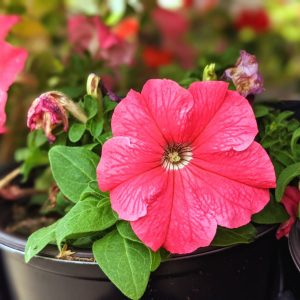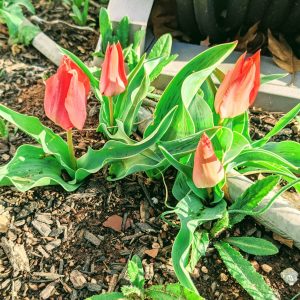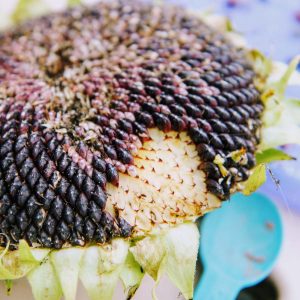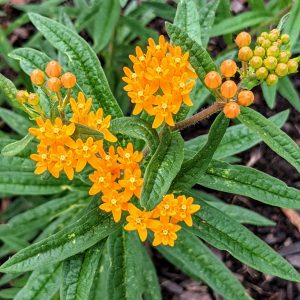Pruning Petunias – How to Prune Petunias for More Blooms
Pinching petunias and other flowers can help to encourage even more blossoms to open! Likewise, pruning petunias helps to keep regular blooms coming all season. It’s easy to learn how to pinch and prune petunias with a few simple steps.
You can pinch out petunias grown from seed or those purchased at a garden center.
Once plants become more mature, you’ll want to prune petunias regularly to encourage better flowering and fuller plants.
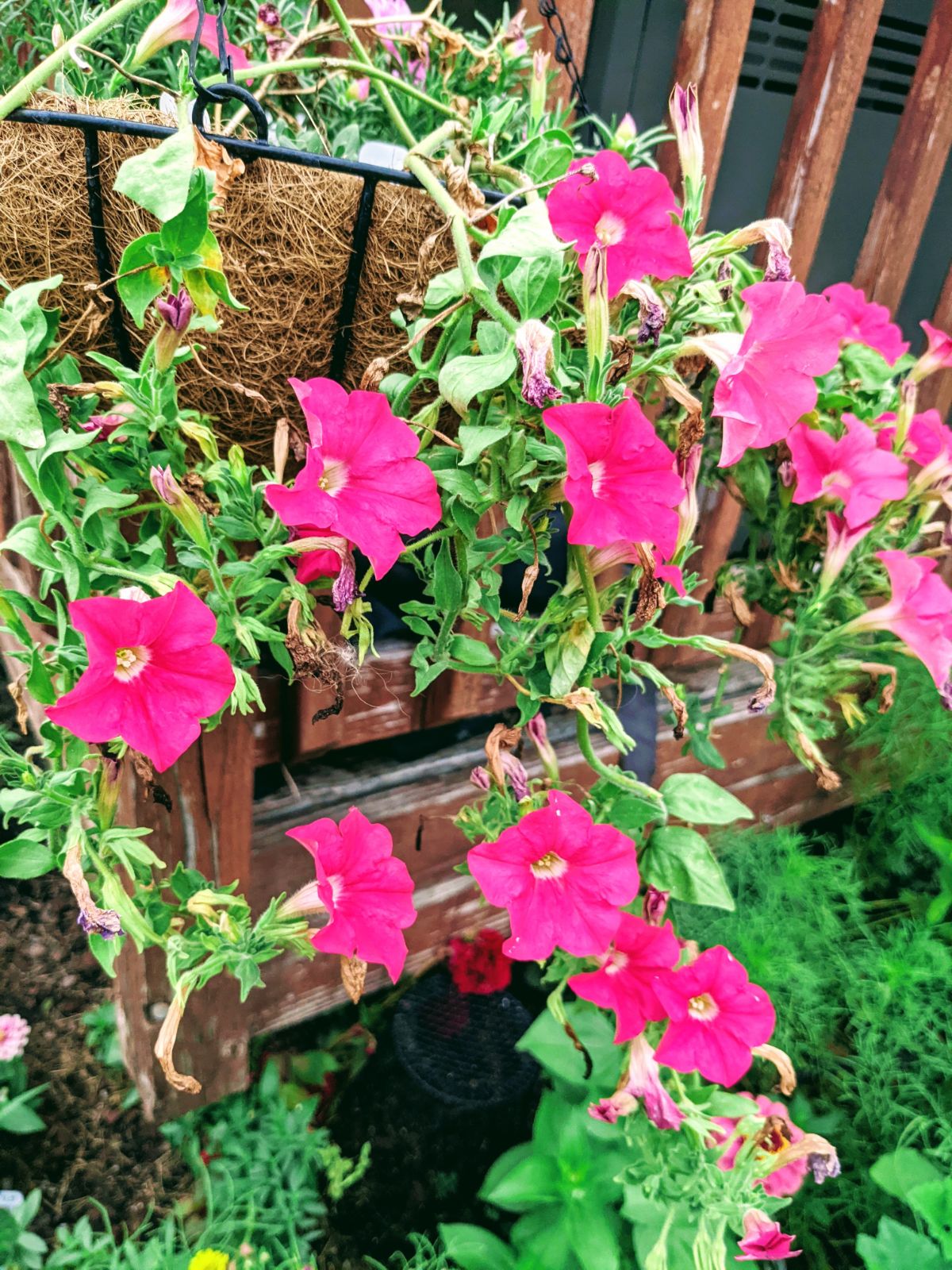
Check out these easy tips on how to prune petunias and pinch out for better growth!
What does pinching petunias mean?
Pinching petunias means you pinch or snip back a bit of the petunia plant to encourage branching. It is roughly the same thing as pruning petunias, but often pinching is done on young plants before they reach their full size potential.
Should you prune petunias?
Yes, it is usually a good idea to prune petunias for fuller plants with more blooms. Pruning helps to transform a spindly petunia plant to a lush and more compact plant.
Pruning wave petunias is not necessary, but most traditional petunias thrive when pruned regularly.
When do you cut back petunias?
You can pinch petunias as soon as you plant them in your garden. Even for hanging baskets and planters, prune a few stems as soon as you come home from the store. Encourage all those new flowers!
How often should you be pruning petunias?
When possible, aim to prune petunias at least once per week on a rolling basis. This helps to ensure that some parts of the plant are always in bloom or nearing blooms.
Pruning petunias monthly can work if you haven’t got the time every week. In this case, cut the petunias back by the middle of summer so they still have time to bush out for the rest of the season.
How far do you cut back petunias?
You can cut petunias back by anywhere from 1/5 to 1/2 their height / length. Consider if the petunia is leggy and trim accordingly.
Benefits of Pruning Petunias
Consider trimming petunias to enjoy these positive results:
- More Flowers!
- Bushier Plants
- More Compact Plants
- Neater Gardens
- MORE Plants – You can even replant the tops you and propagate petunias to add to your garden and containers.
How to Pinch Petunias (Young Plants)
When growing petunias from seed or bringing home small starter plants, you can pinch young plants to encourage branching. Trimming petunias keeps plants looking neat and tidy as a bonus to the gorgeous burst of new flowers!
Follow these tips on how to pinch petunias to inspire a fuller plant.
- Choose a stem on the plant to pinch back.
- Gently hold the stem between your thumb and finger.
- Use your dominant hand to pinch the growth tip off the plant. Pinch off only the top 1/3 inch or so, right above the leaf node.
- Monitor your petunias in coming days and weeks for signs of new growth. Two new growth tips should emerge from the pinched stem’s leaf nodes.
How to Prune Petunias (Mature Plants)
Trimming petunias is almost as easy as it gets! Follow these easy steps to prune back petunias for a bushier plant with more flowers blooming.
- First, deadhead petunias prior to pruning back any stems.
- Next, choose a few stems based on the overall size of the plant.
- For small plants: Pinch back petunias on 1 to 3 stems weekly, depending on size. Cut above a leaf node at about half the length of the stem.
- For large plants & hanging baskets: Pinch back petunias as many as 8 to 10 stems at a time. Likewise, trim petunias in half on these stems, right above a leaf node.
- For small plants: Pinch back petunias on 1 to 3 stems weekly, depending on size. Cut above a leaf node at about half the length of the stem.
- Hold stems between your finger and thumb to stabilize them.
- Use your other hand to pinch or scissors to trim petunia stems between 1/5 and 1/2 their height. Trim back leggy petunias to about half their length.
- Choose different stems throughout the plants. Do not choose all the stems on the same side.
- Discard pruned away bits in your compost or with your yard waste.
In a matter of days to weeks, you should see new growth emerging beautifully from each of the leaf nodes where you trimmed back your petunias.
Pruning Petunias: Tips
Learning how to trim petunias doesn’t take much time or effort. The hands-on effort you make the first time will likely lead you to even more flowers quickly and easily. (In other words – don’t worry about doing it wrong!)
The best tips for pruning petunias should help you arrive at the most flowers blooming as possible.
Prune petunias regularly. Pinch or cut back petunias on a rolling basis so you always have something in bloom!
- Deadhead as well. Even if you are pruning petunia plants regularly, you should still remove dead flower heads from the plant and the ground as well.
- Pinch while plants are young. Pinching petunias early helps them to branch out sooner in the season, resulting in more flowers.
- Prune back leggy petunias. Some petunia plants become spindly. Cut these plants back more severely than any maintenance pruning you do.
- Alternate pruning weekly. Prune different parts of different petunia plants every week to keep plants blooming evenly and often!
I hope these tips on pinching and pruning petunias make it easy for you to get even more flowers this year!
Cutting Back Petunias
Now that you know how to cut back petunias, you can tackle this garden task without another thought!
I’ll be honest – I don’t always have time to do as much pruning as I need to do. Still, I’ve enjoyed every year’s gardens to the fullest. Even if you can’t do All. The. Things. – don’t be hard on yourself and just enjoy everything you DO have time to do. 🙂
Hit us up in the comments if you want to chat about petunia pruning or petunia pinching! Ask any questions you have or share your own favorite tips to help us all grow better petunias!
Our website features affiliate links to products that we personally believe in. If you make a purchase from a link on our site, we may earn a small commission at no cost to you. Thank you! This helps our girls chase their garden dreams! Thanks for your support. (View full affiliate disclaimer at the end of the page.)
By the way, you might also enjoy these similar posts:
Happy Gardening!


